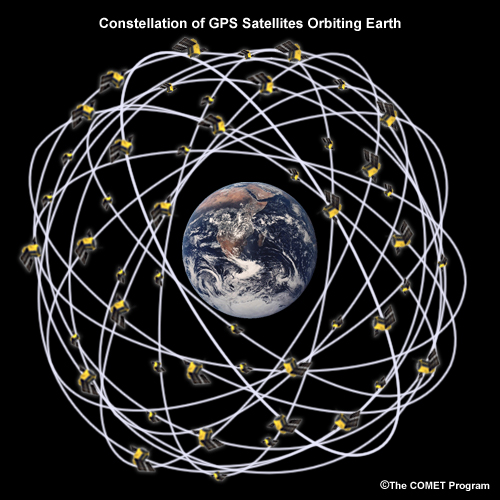
sunearthday.nasa.gov
 sunearthday.nasa.gov |
| Title Page
GPS Satellites
Special Relativity General Relativity
Application to GPS Satellites
Bibliography |
 http://www.eumetsat.int/eps_webcast/eps/print.htm |
According to NASA,
there are 24 GPS satellites that orbit the earth. They orbit at about 20000 km above the surface of the earth at an average speed of about 14000 km/hr. (Pogge) |
| Each of these 24 satellites
contain an atomic clock that is accurate to within 1
nanosecond. It is this clock that makes GPS
technology possible. The GPS receiver in your car or
handheld GPS device uses the time information it receives
from the satellites within range to calculate your exact
position to within several meters. The common
misconception is that this is achieved through
triangulation, but in fact the calculation of your
position does not use angles at all. The
intersections of 3 or more circles or spheres is used to
determine your location through a process called
trilateration. (Pogge) Accuracy of the clocks on these satellites is extremely important if the position is to be calculated to any degree of accuracy. The effects of time dilation due to Special Relativity and General Relativity must therefore be taken into account. |